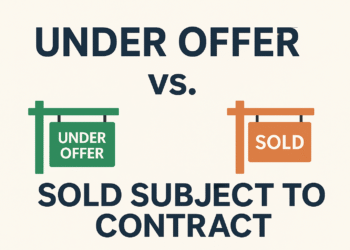First, we must understand that by types of investors we are not discussing types of investment vehicles. They don’t mean exactly the same thing. They are completely different in the financial world. Investment vehicles are avenues through which an investor can invest his/her money in expectation of return or profits.
Examples include (but not limited to bonds, mutual funds, real estate, commodities, options, exchange-traded funds (ETFs), foreign exchange (forex), index funds, gold, silver and futures). On the other hand, when we say types of investing, we are referring to the approach of investors to the act of investing.
In consideration therefore, there are basically two types of investors (or two type of investing). As already explained this classification is primarily based on their approach to investing in the market. These two types of investors are called active and passive investors.
While active investing means hands on participation by investors in the choice of stocks they invest in, passive investing on the other hand is the otherwise. In passive investing investors are not directly involved in making these choices. We shall discuss each of these types of investors differently below:
Active Investors
In simple terms an active investor is someone who is directly active in the stock market. This is one of the approaches to the market and those who take this approach are called active investors. Some investors are fully engaged in the rudiments of investing, trying to understand the fundamentals of the companies in which they want to buy their shares.
As an active investor you would normally want to personally select what you invest in by independently assessing the asset to determine their worth. You may even target to beat the results of the experts, such of the fund managers of known index funds, like S&P 500 and Dow Jones. To do this you will need to carry out your own research on the investment options such as stocks.
Researching stocks would mean looking at past history of a particular stock to see how it has performed in the past. Things such as the following will be of interest to an active investor:
- Past financial statements of the company which shares is of interest to the investor to determined how the company has performed in the past.
- The investor may also be looking at the history of dividend payment by the company, especially if income from dividend fits into your investment strategy.
- The history of price movement would also be of interest to an investor who is looking at capital gain.
- The management of the company may also be considered by an investor to understand their capacity to provide good leadership that is necessary for growth.
- The growth plan of the company, the industry it operates in and the health of the sector in the general economy are things an active investor will also be gathering information on in the course of the research.
In determining whether a company stock is a good pick, a lot of consideration goes into it. All the details above are fully analyzed vis-à-vis all necessary variables before an investment decision is made to either pick or drop the stock. It is a time-consuming job. It is also a job that requires relevant financial knowledge in other to do it creditably well.
This explains why there is increasingly a decision by many investors not to get directly involved with stock picking. They chose to leave it in the hands of professionals who understand it better. This decision also means that such investors get to share more of their returns with the professionals. They have no choice but to path with a larger share of their profits in paying more fees to the stockbrokers.
However, for the active investors who take the time and the pain to go through the stress of understanding how it works, and directly pick their own stock get to keep more of their returns. By looking at the company`s financial records and conducting fundamental analysis of corporate financial statements, an active investor can become a good stock picker and thereby pay less fees to the stockbrokers where any fee applies at all.
Passive Investors
Alternatively, there are those who will rather rely on others to carry out the necessary research about the fundamentals of company stocks. They deliberately choose not to engage actively in the process of information gathering and tracking of stocks indexes and past performance. These types of investors are called passive investors. They usually don’t have the time to carry out indebt research or may not have the knowledge to do so. Investors may also avoid active approach because of the cost of carrying out effective research.
Passive investors only create brokerage account with stockbrokers who take responsibility for stock indexing, tracking and hand picking on behalf of the investor. This is the foundation for investment vehicles such mutual fund, exchange traded funds (ETFs), index funds (such as S&P 500, Dow Jones Industrial Average, FTSY 100, etc).
These are products by stock brokerage firms who are also fund managers. Each of the products contains a list of some handpicked stocks, which are indexed and tracked real time by these firms. They monitor their performance and follow their progress in the market. All an investor needs to do is to make a pick of any of these products, each of which is a collection of several high-performance stocks all handpicked by the fund managers.
So, rather than trying to outperform the professionals like an active investor will do, a passive investor will be happy to depend on the results professional brokers can achieve. The investor is happy to settle for the results these professionals are able to achieve on his behalf based on what they have a track record of achieving in the past.
Hybrid Investors
As the name implies, this is a combination of the two major types of investing – the hybrid approach. That is what I choose to call it. You may never find this in any textbook or hear it in any classroom or masterclass. However, it is real. It is a reality in the investment marketplace and used by many investors to try to maximize their return on investment.
Some investors could choose to share their money in two ways, invest one part passively through fund managers who manage some mutual funds, ETFs and index funds that have consistently performed well in the past. Such assets as we already mentioned above will include Dow Jones, Russel 300 and S&P 500.
Then the investor can choose to plunge the second part into the market directly through active approach, by trying to research and pick individual stocks rather than invest in managed funds by fund managers. Through this hybrid approach, an investor can compare results from the fund managers against the results or performance of the individual stocks, which he personally handpicked.












